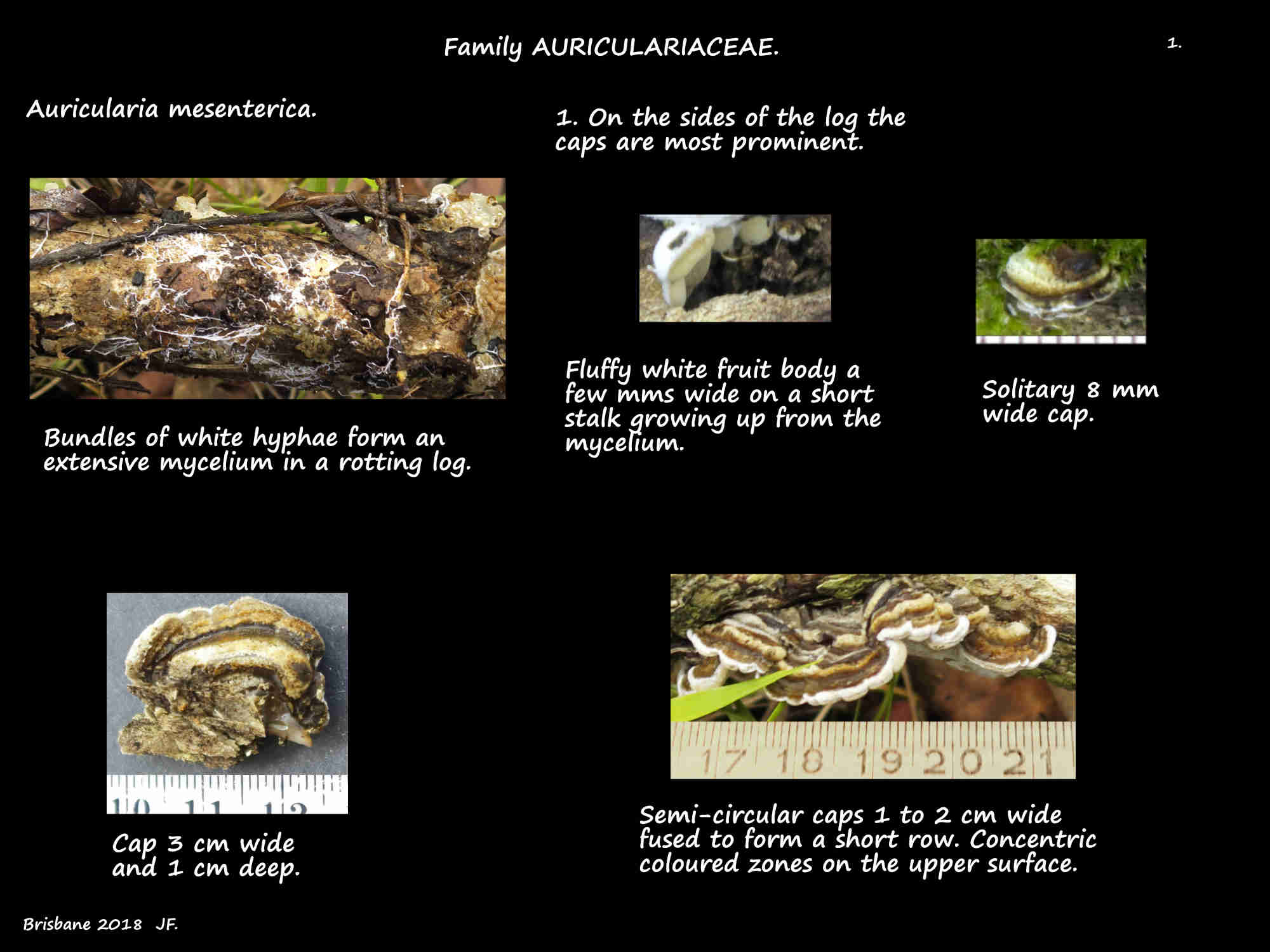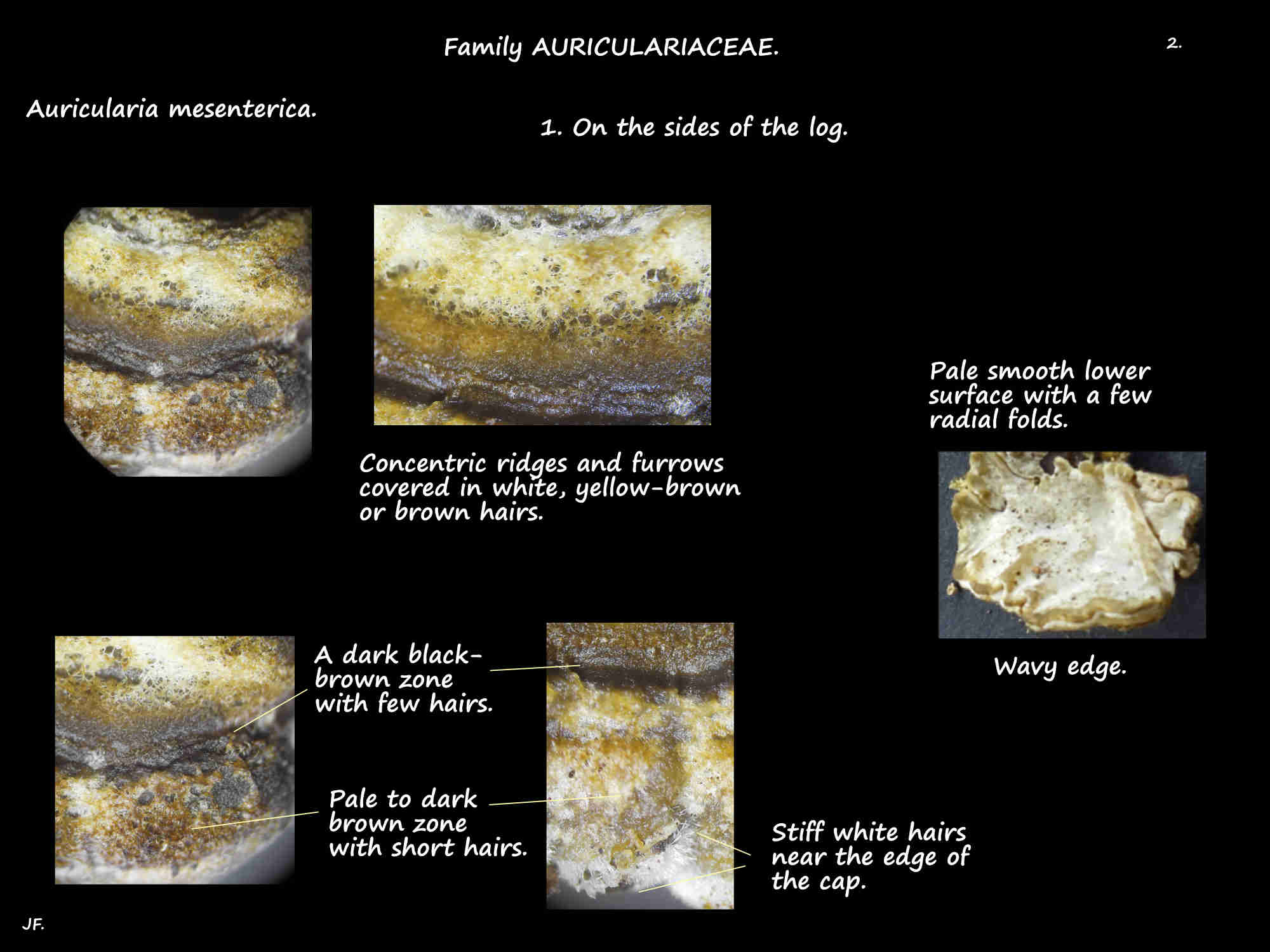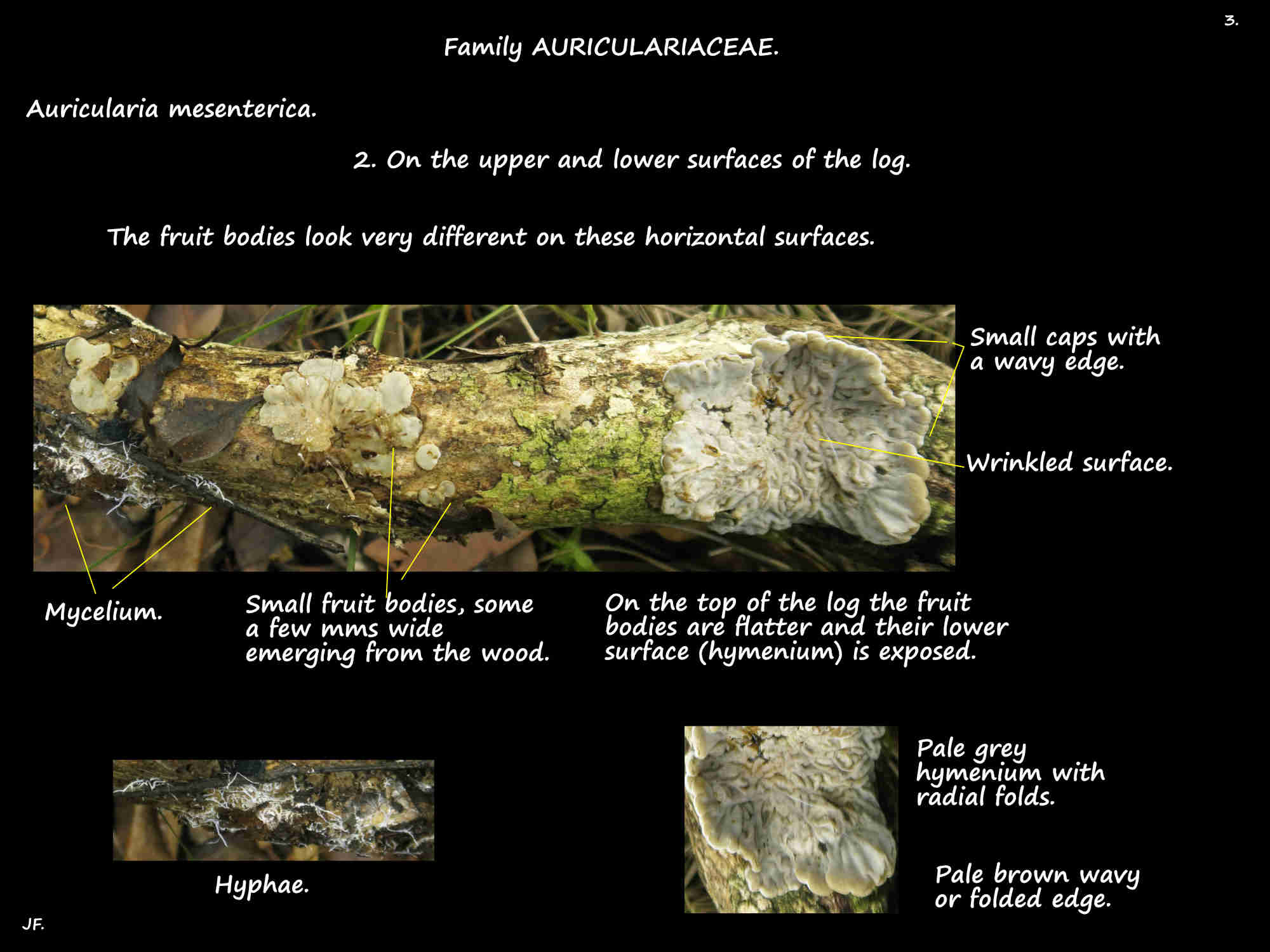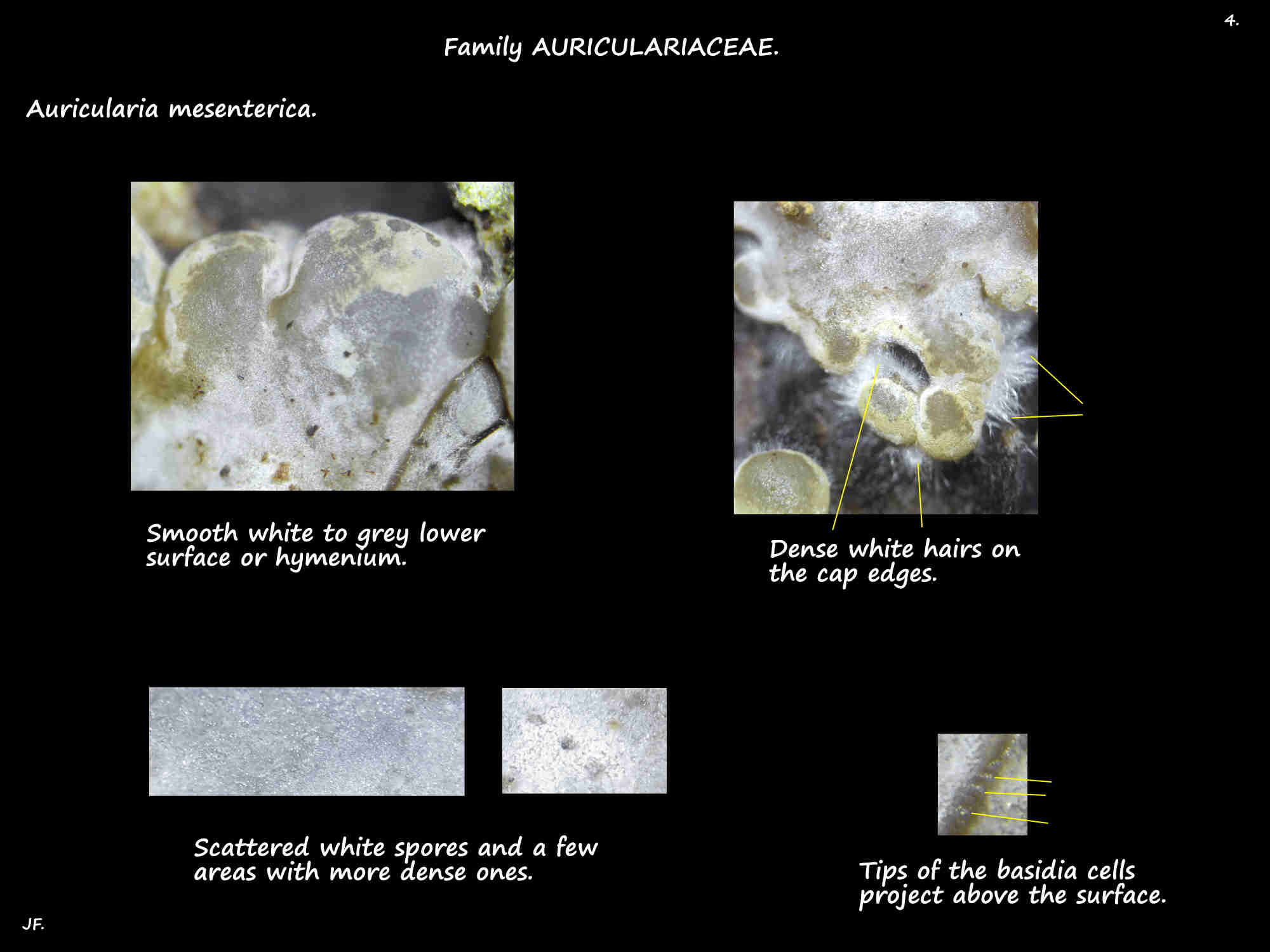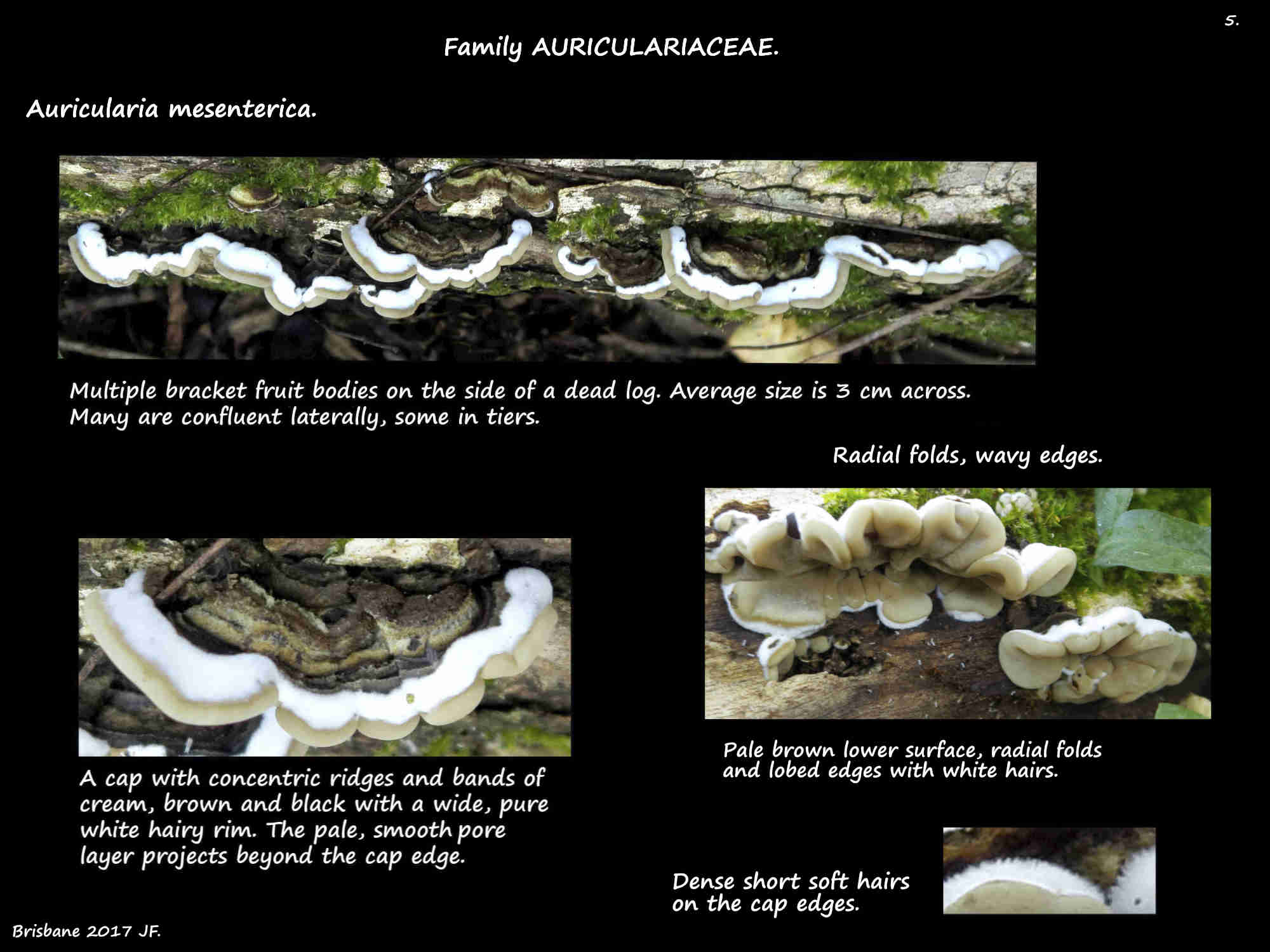Division Basidiomycota > Class Agaricomycetes > Order Auriculariale > Family Auriculariaceae.
This fungus has been described in many countries around the world from Europe, across North America, into Asia and down to Australia.
The Tripe fungus grows on decaying wood where it causes white rot.
The permanent vegetative part (mycelium) forms an extensive network in decaying logs.
Fruiting bodies (basidiocarps) are the temporary reproductive parts.
They emerge through cracks in the wood as small white furry balls on a short stalk.
As they grow their shape depends on where they emerge.
On horizontal surfaces they form a flat layer with their lower surface visible and small raised caps at the edges.
On the vertical sides of a log the caps are more prominent with the lower surface visible underneath.
The jelly-like caps vary in size from 2 to 10 or 15 cm wide and 5 to 10 cm deep.
The roughly semi-circular caps commonly fuse to form rows along a log.
One log may have a few rows forming tiers up to 1 m long.
The upper surface has concentric grooves and ridges of different colours.
Zones can be dark or pale brown, yellow-brown, grey or black.
Most of it is covered with a mix of short stiff and soft tangled hairs.
The wavy or lobed edges have dense white hairs.
Old fruit bodies may be green due to lichen growing on them.
(The upper surface often looks very like a Trametes hirsuta).
The initially smooth lower surface is the spore forming hymenium.
It develops radial folds or wrinkles and is covered in a gelatinous exudate.
It is white with pale grey or brown areas.
The microscopic spore producing cells (basidia) project just above the surface.
The spores are white.
A study published in 2021, based on genetic and chemical analysis postulated an Auricularia mesenterica complex.
This described a strictly defined species A. mesenterica s.s. from Europe and Asia and a number of similar species in other countries.
Wu F, Tohtirjap A, Fan LF, Zhou LW, Alvarenga RLM, Gibertoni TB, Dai YC.
Global Diversity and Updated Phylogeny of Auricularia (Auriculariales, Basidiomycota).
J Fungi (Basel). 2021 Nov 3;7(11):933. doi: 10.3390/jof7110933. PMID: 34829220; PMCID: PMC8625027.
J.F.
